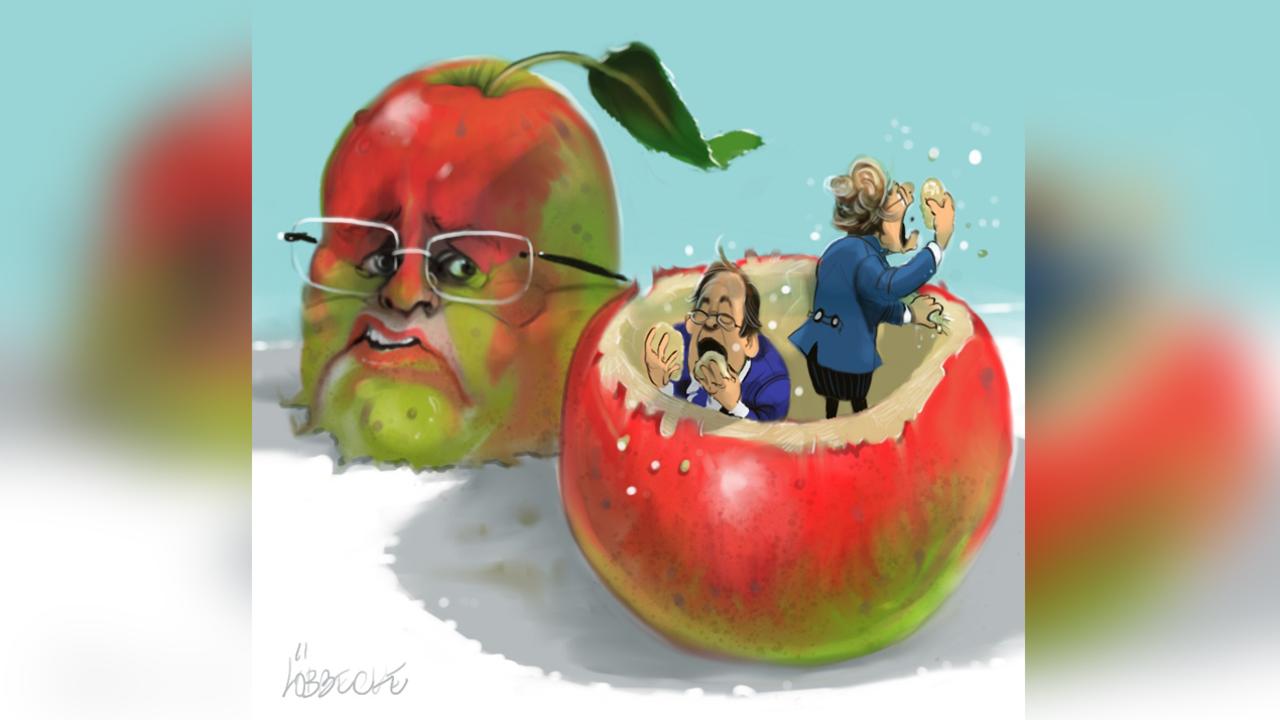ACCORDING to the ALP's "A New Way" ad, "the old politics of negativity just won't work". Luckily, there's a new politics of negativity to replace it: so far, 60 per cent of the election ads posted on Labor's website involve attacks on the Coalition, with the proportion for the Coalition being similar.
That is neither undesirable nor unexpected. On the contrary, negative advertising has been at the heart of campaign playbooks since the dawn of electoral competition.
When the great orator Marcus Tullius Cicero ran for consul, the highest position in the Roman republic, in 64 BC, his more worldly brother, Quintus Tullius Cicero, urged him to remember that while "the masses demand a good show, full of colour and spectacle", it was crucial "to remind them of what scoundrels your opponents are and to unceasingly tar them with their crimes, sexual scandals and corruption".
That eerie prescience for Labor's recent ethics was echoed centuries later by Niccolo Machiavelli, who argued that if republics were better governed than principalities, it was because each candidate "freely speaks ill of others", exposing venality and vice, while criticism of princes "is always burdened with a thousand fears and hesitations". And although John Stuart Mill concluded of the electorate that "some are wise, and some otherwise", he famously emphasised the value of criticism in promoting "the clearer perception of the truth, produced by its collision with error".
But the case for negativity goes even further. As the political scientist John Geer showed for US presidential campaigns, there are two fundamental differences between positive and negative political advertising.
First, in election campaigns, each party plays to its strengths, avoiding issues on which its performance is poorest. But those are exactly the focus of its opponent's attack ads, making voters aware of the rival's weaknesses.
Second, attack ads, to be credible, have to be far more firmly grounded in fact than do mere assurances of a party's noble intentions. It is easy to say one is in favour of tax cuts; to convince voters the other side rejects them requires substantiation. As a result, negative ads typically feature more factual content, and the stronger the attack, the greater the factual content.
An analysis of all the major parties' ads since the election was called bears out Geer's conclusions. While only half contain verifiable claims, nearly 80 per cent of those that do are predominantly negative, with mainly positive ads often containing no hard information at all.
That makes negative ads especially important in helping voters hold incumbents to account. And that role is all the more vital as electorates become more volatile: in 1967, only 30 per cent of Australians did not vote for the same party in every election; that share is now about 50 per cent. Greater volatility doesn't mean voters have a deeper knowledge of politics: despite rising educational attainment, nearly 40 per cent of voters cannot answer more than one simple question out of six about Australian democracy, a proportion that has changed little over time.
Yet voters are genuinely interested, with more than 90 per cent saying they discuss elections with friends and colleagues and one-third trying to influence others' decisions. And they are particularly interested in parties' competence: their ability to deliver on the things most voters believe matter. Unless a party can demonstrate that, studies suggest, voters discount its promises.
Little wonder attacks on competence are such a high share of negative ads. But that is hardly to say those ads are necessarily accurate.
Hannah Arendt's observation that "no one ever counted truthfulness among the political virtues" is amply confirmed by the ALP's GST ad, which assures voters, in tones of blood-draining horror, that "a GST increase is on the table under Tony Abbott: he just doesn't want to tell you before September 7th". As for Labor's ad linking tobacco company donations to the Coalition with the statement that "this year 124,901 people will be diagnosed with cancer", it stops just short of accusing Abbott of mass murder.
But each side has its chance: and given Labor's record of debt and deficit, delusion and dissolution, the Coalition scarcely lacks ammunition.
Of course, a proliferation of attack ads does little to elevate the debate or develop common ground. But elections are about choice and consequence, not compromise and courtesy. A campaign is a competitive, zero-sum activity, in which defeating the adversary is the dominant and legitimate motive. The greater the stakes and the wider the disagreements, the harsher campaigns will inevitably be.
Amid that negativity, however, exhaustive examination (deserving of generous hardship pay) shows a positive TV viewers can count on: Julia Gillard does not figure in a single ALP ad. Once twin cheeks of the same bottom, now she does not merit even a fleeting appearance when Kevin takes credit for DisabilityCare and Gonski. Stalin apparently needed two years to airbrush Trotsky from photos with Lenin; today's Labor is more efficient.
Yet, given how Kevin Rudd is faring, Labor's strategists, as they fret in the party darkroom, might learn from their Uzbek communist colleagues, whose leader, Faizulla Khodzhayev, was purged by Stalin in 1937 and then blanked out of all official portraits.
In 1964, with the party launching a propaganda blitz, he had still not been rehabilitated, but it was plain he soon would be. The Uzbek apparatchiks faced a dilemma: to exclude Khodzhayev from the founders' photo could be viewed in Moscow as resisting the winds of change, but to include him might smack of adventurism.
Opting for safety, they quietly re-inserted him but masked his notoriously clean-shaven face in an all-enveloping beard.
The lady has vanished; might it be time for a bearded lady to take her place?



